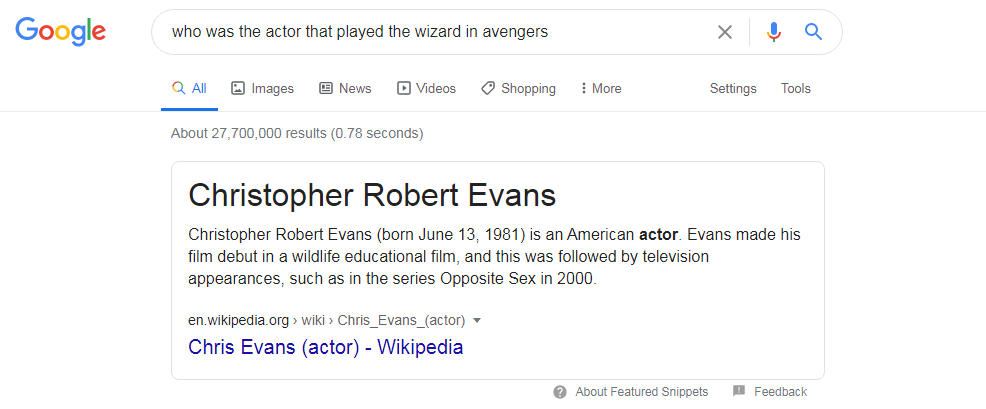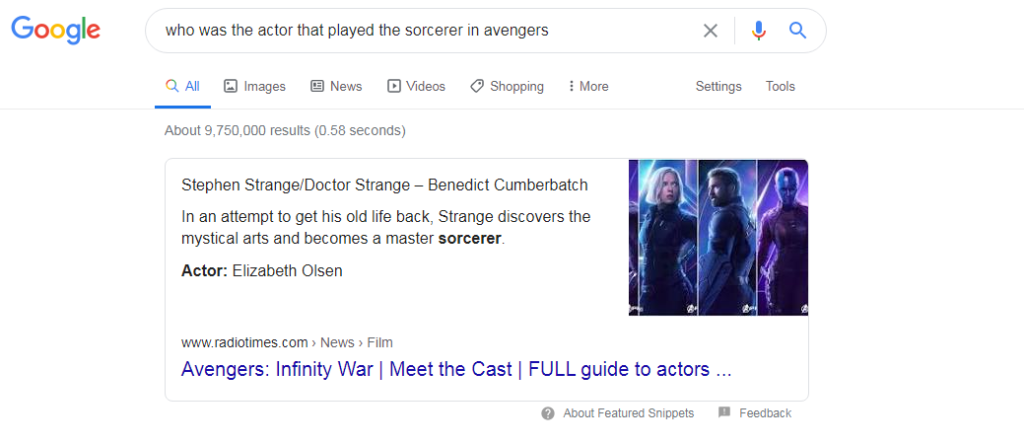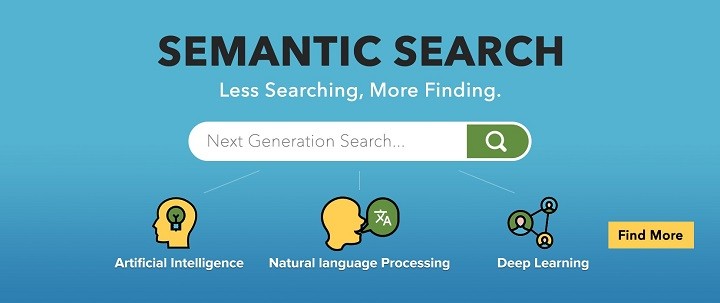Understanding Semantic Search to Boost Your SEO
Today, a deep understanding of the meaning behind the keywords, content that effectively answers the context of the keywords, and the intent behind it is what succeeds in the search results. All of these were brought about by the age of semantic search. Let’s dive deeper.
What is Semantic Search?
Semantic search, simple enough, is the search engine’s way to have a deeper understanding of a user’s queries by analyzing and connecting the meaning and relationship between the words and their context. This in turn enables search engines to find the best possible relevant pages to display even if the user’s query wasn’t straightforward. Here’s an example:
This specific search is pertaining to the well-known phrase “The quick brown fox jumps over the lazy dog”. Google understands the context between the words used in the query and effectively answers it by knowing the relationship between the animal (quick brown fox) that jumped over the dog. Now, if semantic search was nonexistent, Google might have shown me results that showed random animals jumping over dogs.
This just goes to show how far search engines have come to understanding the queries made by users. However, much like other machines, search engines are also limited to their own knowledge. Here’s another example:

Now, most of us know that the wizard in the Avengers is Doctor Strange, played by Benedict Cumberbatch. But when I searched for it, the answer Google gave me is Chris Evans, the actor that played Captain America. This isn’t the correct answer, far from it. But this is what happens when I change a word in my query:

The search result actually shows the correct answer – Benedict Cumberbatch being the actor that played Doctor Strange. The snippet isn’t as accurate as we’d like but it still does answer the question. So, if you focus on the query I made, I changed the word “wizard” to “sorcerer” and Google actually gave me a fairly accurate answer. Why did this happen? The reason behind this is easier to infer than you might think.
Through the use of Knowledge graphs, introduced back in 2012, Google has an extensive database of public information and the entities contained inside them such as the people involved, their birthdays, parents, etc. Now, through the knowledge graphs that Google has, they use what’s contained inside it to better understand queries. The inference we can make is that in Google’s database, Doctor Strange (and the actor that plays the role) is known as a sorcerer and not a wizard. This, possibly, could be the correct answer to why Google was able to give me a more accurate answer than the one I previously searched for.
To summarize, Google uses the following to better understand a user’s query:
- Search Intent
- Context
- Relationship and connection between the words
All of these things, coupled with your search history and behavior, affect how Google understands your queries and which results they display. Aside from Knowledge Graphs, Google released a series of updates over the years to make semantic search more accurate and effective.
Algorithm Updates that Affect Semantic Search
Hummingbird
In 2013, Google released its Hummingbird update to help with understanding complex search queries. This update was released to reward the pages that match the query’s context rather than the page matching the words inside the query.
To simplify it more, Google rewarded pages that answered the user’s query rather than rewarding the pages that just contained repeated mentions of the words in the query.
Rankbrain
2 years after Hummingbird, Google released Rankbrain; a machine learning system that’s considered a ranking factor and analysis AI. Rankbrain shared the same purpose with Hummingbird but with the edge of its machine-learning integration.
Through Rankbrain, Google was able to deliver more relevant results by interpreting the user’s through their location, behavior, and the words they used in the query.
BERT
This is the newest addition to the updates Google Released. BERT is Google’s way of better understanding longer queries and more complex sentences by processing the words and their context & meaning in relation to the other words contained in the search query.
Through the BERT model, Google aims to deliver more accurate and relevant results to “longer, more conversational queries”. By the end of 2019, the BERT model affects 10% of all queries made in Google. This might not sound like a large number, but consider how many users Google has and how many times they search per day.
Understanding Semantic Search Leads to Better SEO
Semantic search isn’t a small thing that we can disregard. It’s a massive process that changed an entire industry and it will only progress toward better things as the years go by.
SEO on the other hand is a practice that revolves around adapting all our strategies and tactics to hopefully reach the first page of an ever-growing search engine landscape. So, with semantic search, it’s only logical that our strategies change to better fit the current landscape. Some of the major changes we made in SEO Hacker include:
- Changing our focus from keywords to topics
It’s not about just writing about a specific keyword anymore. Much like the queries that users search for, keywords can mean a lot of things. That is why shifting our focus from a keyword-centric content strategy to a topically-relevant content framework did us wonders.
The primary difference between a keyword and a topic is their scope. A keyword is only limited to the meaning it holds while a topic will include multiple keywords under it. Knowing what the topic is and being able to write about it and its corresponding subtopics is an essential part of creating high-quality, valuable content today.
A great example is writing about title tags. If we were to solely focus on keywords, we would create pages that target “how to change a page’s title tag”, “best title tag length”, “how to optimize a title tag”, etc.
But if we focus on writing about title tag as a topic then we would write a page about “The Ultimate Guide to Title Tags” or “All You Need To Know About Title Tags” where the content talks about the subtopics such as “how to change a page’s title tag”, “best title tag length”, and “how to optimize a title tag”.
Of course, you would need to know which subtopics are relevant to the users. You can’t write about everything about the topic at hand because that will not only waste your time and energy, but it will also discourage the user from reading everything as well. Using the example I used above, I wouldn’t include things such as “the history of title tag” or “who popularized the term title tag” simply because users wouldn’t care about those subtopics.
- Understanding and serving search intent
Have you ever experienced ranking highly in the search results for a specific keyword, then you start noticing that you’re slowly ranking lower even though you know for yourself that the page ranking for the keyword is fully optimized and has valuable content? We’ve experienced that for a good number of our clients and the most common reason is that we’re not properly serving the intent of the keyword and the users.
Search intent is easily understood on paper but when applied in the search results, can be tricky and at times confusing.
The best way to mitigate this is to manually search for the keyword you’re ranking for and check the pages that are ranking higher than you. How does their content differ from your own? Is the context of their content different from your own? What kind of pages are ranking higher than you? Are they product category pages? Blog posts? Homepages? – these are questions you need to ask yourself when you’re slipping in rankings.
Simply put, your page should be something that Google would WANT to display on the first page of the search results for that specific keyword, and the best way to find it is to check what EXACTLY is Google displaying on the first page.
Key Takeaway
Outdated SEO strategies and below-average content aren’t enough for the search engines AND users. Semantic Search has changed the SEO game for the better and it actually serves users more relevant and accurate answers than before.
Once you have a firm grasp of semantic search, then adapting to it will come easier than you think, especially if you’ve already made it a point to publish high-quality and relevant content.
Do you have any questions about semantic search? Comment it down below and let’s talk!


